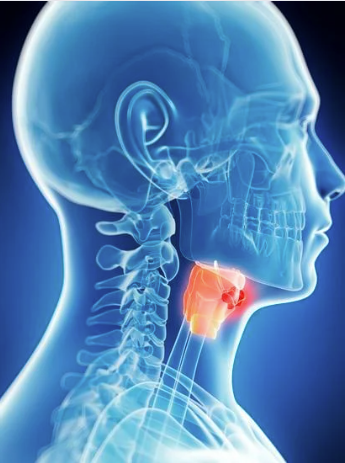Radiation Therapy Plus Chemo Yielded Increased Efficacy in HPV+ Oropharynx Cancer
The use of postoperative adjuvant radiation therapy led to less weight loss in patients with HPV-positive oropharynx cancer, according to Wade L. Thorstad, MD.
The use of postoperative adjuvant radiation therapy led to less weight loss in patients with HPV-positive oropharynx cancer, according to Wade L. Thorstad, MD.

Postoperative adjuvant radiation therapy (POART) without or with cisplatin (POACRT), given in a risk-directed fashion, showed progression-free (PFS) and overall survival (OS) rates of at least 90% in patients with surgically resected locally advanced, human papillomavirus (HPV)-positive oropharynx squamous cell carcinoma (OPSCC) with both intermediate- and high-risk pathology, according to findings from the phase 2 MINT trial (NCT03621696) presented at the 2024 ASTRO Multidisciplinary Head and Neck Cancers Symposium.1
In the study, patients were enrolled onto 3 arms: high-risk pathology (extra-nodal extension and/or positive margin) with cisplatin at 100 mg/m2 for 1 dose plus 42 Gy radiation (arm 1; de-POACRT), intermediate-risk pathology (lymphovascular invasion, perineural invasion, with 2 or more positive nodes, positive node of more than 3 cm, T3 or N2 disease) with 42 Gy radiation (arm 2; de-POACRT), and highest-risk pathology (cT3 to pT4) of cisplatin at 100 mg/m2 for 3 doses plus 60 Gy radiation.
At a median follow-up of 50.3 months (IQR, 40.7-55.2), results showed that 4-year progression-free survival (PFS) rates were similar at 90.0% in arm 1 and 90.1% in arm 2; 4-year OS rates were 100% and 94%, respectively.
“The primary objective was met with significantly less weight loss with de-escalated treatment. The 4-year PFS risks were de-POACRT and de-POART were 90%,” said study author Wade L. Thorstad, MD, chief of head and neck service, professor of radiation oncology, at Washington University School of Medicine in St Louis, who presented the findings during the meeting.
Standard postoperative radiation is comprised of 60 to 66 Gy, but according to data from the ECOG 3311 study, it was found that reduced radiation at 50 Gy for intermediate-risk patients was equivalent to 60 Gy.2
In the multi-arm, nonrandomized, phase 2 MINT trial, patients with HPV-positive (p16) OPSCC or positive neck nodes with unknown primary site suitable for upfront transoral robotic surgery/transoral laser microsurgery received postoperative radiation at 42 Gy/21 (2.0 Gy/fx) along with 100 mg/m2 cisplatin for 1 cycle. The approach was pathology-driven adjuvant therapy, Thorstad noted.
To be eligible for enrollment, free-flap reconstruction was not permitted, and patients needed to have clinical stage I to III, based on the American Joint Committee on Cancer 8th edition, disease, excluding clinical stage T1-2, N0, T4, and N3 disease. An ECOG performance status of 0 to 1 and adequate organ function were also required.
The primary end point was weight loss, a quantitative surrogate of mucositis severity; secondary end points were recurrence rate, PFS, and OS with de-POACRT and de-POART.
Sixty-three patients were assessed, 5 of whom were deemed ineligible. Fifty-eight patients were enrolled and underwent surgery. Four patients did not receive the recommended adjuvant treatment (arm 1: n = 1; arm 2: n = 1; arm 3: n = 2). There were 20 patients allocated to arm 1, 30 to arm 2, and 4 to arm 3.
Baseline characteristics of the 50 patients showed that the median age was 58 years (IQR, 51-62), 5 patients were female, half had no smoking history (n = 25), 21 and 27 patients had their primary site of clinical and pathologic disease, respectively, in their tonsils. Most patients had T1 (n = 29) or T2 disease (n = 17), and 41 had N1 stage disease.
Prior findings, which were reported at the 2022 ASTRO Multidisciplinary Head and Neck Cancers Symposium, showed that the mean percent weight loss during de-POARCT was significantly lower compared with a similar historical cohort treated with conventional POACRT at 4.9% vs 7.4%, respectively (P = .0003).
At the updated follow-up, 2 patients allocated to arm 1 had distant-only recurrence and 1 in arm 2 with regional and distance recurrence. One patient on arm 2 died due to unknown causes but was reported to be disease-free 3 months prior. The recurrence rate in arm 1 was 10% (95% CI, 1.2%-31.7%) compared with 3.3% (95% CI, 0.1%-17.2%) in arm 2.
Thorstad concluded that further studies on this de-escalated treatment approach with radiation are warranted.
References
- Jaconson RS, Oppelt P, Pipkorn P, et al. Long-term efficacy of risk-directed, de-escalated post-operative adjuvant therapy for surgically resected locally advanced, human papillomavirus-positive oropharynx squamous-cell carcinoma (HPV+ OPSCC): A non-randomized, multi-arm phase 2 trial. Presented at: 2024 ASTRO Multidisciplinary Head and Neck Cancers Symposium; February 29-March 2, 2024; Phoenix, AZ. Abstract 14.
- Ferris RL, Flamand Y, Weinstein GS, et al. Phase II randomized trial of transoral surgery and low-dose intensity modulated radiation therapy in resectable p16+ locally advanced oropharynx cancer: an ECOG-ACRIN Cancer Research Group trial (E3311). J Clin Oncol. 2022;40(2):138-149. doi:10.1200/JCO.21.01752